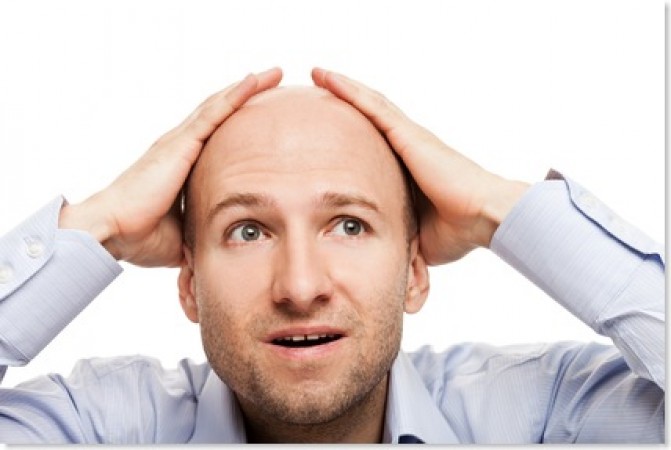
Hair loss, a concern that has haunted individuals for generations, has led to a pursuit of effective treatments for baldness. While the sight of receding hairlines and thinning crowns might be disheartening, advancements in medical science and technology have opened doors to various remedies. In this article, we delve into the world of hair loss solutions, exploring different approaches that individuals can consider. From medical interventions to lifestyle adjustments, let's uncover the possibilities to combat baldness.
In recent years, a perplexing trend has emerged – men in their 20s experiencing significant hair loss. This occurrence, once primarily associated with aging, has raised concerns and curiosity alike. What could be causing this sudden surge in early-onset hair loss? Let's examine six potential reasons behind this phenomenon.
Genes play a pivotal role in determining whether an individual will inherit the tendency to lose hair prematurely. If your father or grandfather experienced early balding, the likelihood of you facing a similar fate increases. Genetic predisposition sets the stage for hair loss, often beginning in the 20s.
Hormones, particularly dihydrotestosterone (DHT), have a significant impact on hair health. Men in their 20s experience hormonal fluctuations that can trigger an overproduction of DHT. This hormone binds to hair follicles, causing them to shrink and eventually leading to hair thinning and loss.
The fast-paced lifestyle of today's world can take a toll on overall health, including hair. Stress, poor diet, inadequate sleep, and lack of exercise contribute to hormonal imbalances, weakening hair follicles. These factors collectively create a favorable environment for early hair loss.
Excessive hairstyling, including tight hairstyles and harsh chemical treatments, can damage hair follicles and weaken the hair shaft. Men often subject their hair to these practices without realizing the long-term consequences, accelerating hair loss in their 20s.
Nutrition plays a pivotal role in hair health. Deficiencies in essential vitamins and minerals, such as vitamin D, B vitamins, and iron, can contribute to hair loss. Poor dietary habits in early adulthood can manifest as hair thinning and baldness.
Certain medical conditions, like thyroid disorders and autoimmune diseases, can initiate hair loss. These conditions often start silently and gradually, making them difficult to detect without proper medical evaluation.
Facing hair loss, especially at a young age, can be emotionally taxing. However, there's a silver lining – a multitude of treatments are available to address this concern. Let's explore some promising options:
Prescription medications like finasteride and minoxidil have shown promising results in halting hair loss and stimulating regrowth. Finasteride works by inhibiting DHT production, while minoxidil enhances blood circulation to the scalp, promoting hair growth.
PRP therapy involves drawing a small amount of the patient's blood, processing it to concentrate platelets, and then injecting the platelet-rich solution into the scalp. The growth factors present in platelets stimulate hair follicles, leading to improved hair density.
LLLT is a non-invasive treatment that uses low-level lasers to stimulate hair follicles. This therapy improves cell metabolism and blood circulation in the scalp, creating an environment conducive to hair regrowth.
Hair transplant surgery involves harvesting hair follicles from areas with dense growth and transplanting them to thinning or balding areas. This surgical intervention provides a permanent solution for hair loss.
SMP is a non-invasive cosmetic procedure that involves tattooing tiny pigment deposits on the scalp. This creates the illusion of a closely-shaved head or adds density to thinning areas, effectively camouflaging hair loss.
Alongside medical interventions, lifestyle adjustments play a crucial role in managing hair loss. A balanced diet rich in vitamins and minerals, stress management techniques, and gentle hair care practices collectively contribute to healthier hair.
The journey to addressing hair loss is a personal one, marked by choices and considerations. Each individual's experience is unique, and there is no one-size-fits-all solution. Whether opting for medical treatments or embracing the bald look with confidence, the power lies in making an informed decision that aligns with one's values and aspirations.
Navigating the landscape of hair loss treatments can be overwhelming, but with the right knowledge and support, individuals can find solutions that suit their needs. Remember, hair doesn't define your worth – confidence and self-assurance are the most remarkable traits one can possess.
The journey through hair loss is complex, but hope is far from lost. By understanding the underlying causes and exploring the plethora of treatment options available, individuals can make informed decisions that align with their preferences and aspirations. Whether opting for medical interventions or embracing a bald look with confidence, the key lies in embracing one's unique journey and defining their sense of self-worth beyond hair.
From Weddings to Festivals: Choosing the Perfect Jewelry
Unveiling the Best Smart Rings: Features and Options Explored
The Hidden Dangers of Tight Bra Straps: Bra Strap Syndrome Explained